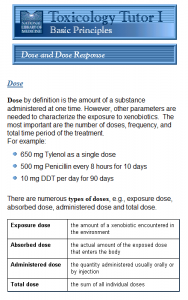7 Ineffective Safety Practices (and what to do instead)

Your Safety Management System (SMS) hitting a roadblock? Real safety culture change not occurring in your facility? Maybe you (and senior managment) are looking it all wrong. Here are few Do’s and Don’ts for improving the effectiveness of your safety program.
DO
- Focus on Leading Indicators – Know where you are going, not focus solely on where you have been.
- Reinforce Correct Behavior – Strengthen what’s working and discourage inappropriate behaviors within your Behavior Based Safety system.
- Focus on needs-based training – can’t do, train for fluency; won’t do – Change the consequences and ultimately the outcome – go beyond compliance.
- Speak with your Actions, not your Words – Demonstrate commitment and uphold integrity.
- Analyze and take Action – Avoid the blame game for past accountability lapses. Develop accountability processes that expect future results and hold true to them.
- Encourage Near Miss / Near Hit / Close Call Reporting – Some of your most valuable data can come from the data associated with near misses. Encourage reporting. Don’t place blame but use as a learning opportunity. As your program matures, so will the near miss reporting processes.
- Be a Safety Coach – Build on what is right in your safety program and don’t focus on what is wrong. Be an encourager and not a defeatist.
DON’T
- Focus on Lagging Indicators – While lagging indicators can let you know where you have been, they should not be your focus and road map on where your safety program and management system is going. Be proactive rather than reactive.
- Implement Injury based Incentive Systems – Injury based incentive systems can drive injury and near miss reporting underground, which can cause a false sense of hope. Additionally, OSHA has specifically addressed and discouraged these type of incentive programs.
- Rely Solely on Awareness Training – While awareness level training is important, it shouldn’t be the breadth of your training program. Use your data from DO #3 and focus on where your gaps and needs are. Spend your training capital there.
- Rely on Motivational Signs & Messages – “Safety Starts with You”, “Think Through It Before You Do It”, etc. At best, you get some (slight) short term benefit, if any. Signage is quickly ignored, overlooked, and blends in with the environment. Don’t depend on motivational signage as your safety culture booster.
- Force Compliance via Blame and Discipline – Nothing on this list more quickly puts safety shortcuts into the underground than the prevalence of blame and discipline within an organization. Don’t fall into the trap. Accountability, yes. A focus on Blame and Discipline, no.
- Discourage Near Miss Reporting – All incidents are not created equal. And this goes with near misses as well. Review your accountability methods to ensure you are not using DON’T #5 to discourage near miss reporting. Near misses must be treated as learning opportunities. Use them to your benefit.
- Be the Safety Cop – You don’t want people to comply just because you come walking through the facility. You want your employees to seek you out for assistance to safety questions or concerns. Without building relationship (coach) and by leading by force (cop), you will surely send your safety culture reeling.
Graphic Source: Aubrey Daniels International







 The Occupational Hygiene Training Association (OHTA), has created a new website,
The Occupational Hygiene Training Association (OHTA), has created a new website, 



